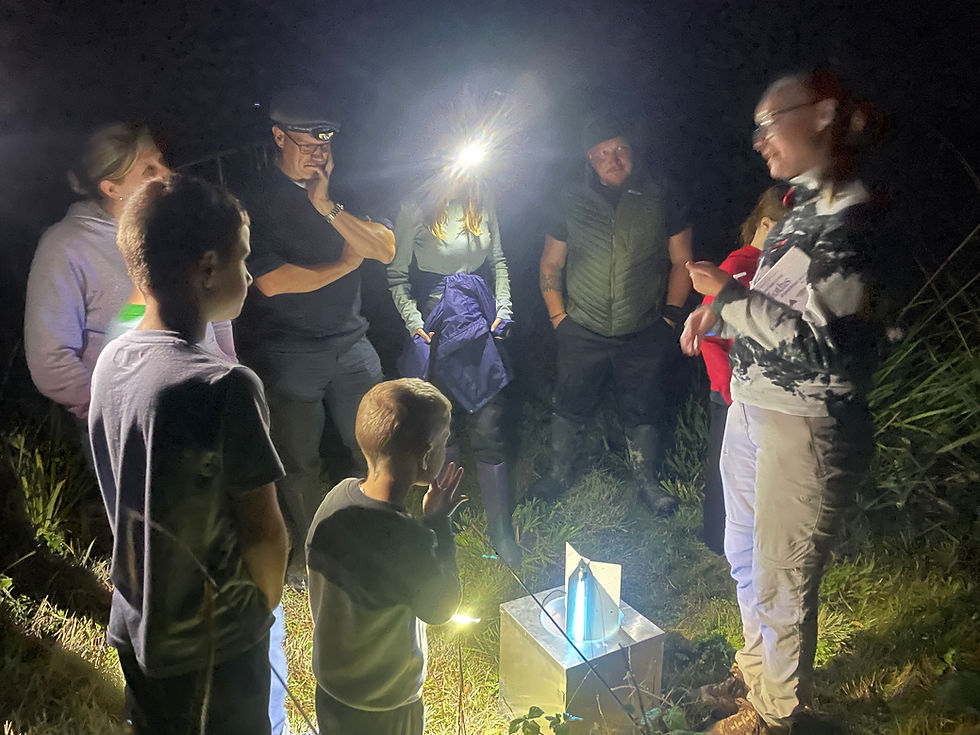August 2025
- angusclark94
- Aug 31
- 3 min read
The American Mink was introduced into the UK for fur farming in the 1960s. Some were released and it is now a troublesome invasive mammal, mainly because it eats pretty much anything (rodents, fish, crustaceans, frogs, and birds). It has been linked to the decline of various other species. Now I know I have one on site I need to consider ways to humanely cull it.
Of course I understand my obligations to do the right thing but I can’t help but wonder about whether culling is the right approach. We have plenty of other non-native mammals that we happily allow into the UK (and our homes) which also indiscriminately prey on native animals, such as this pet cat – here seen with a freshly caught rodent.

The other bat trapped during the evening was the tiny Soprano Pippestrelle. However halfway through its examination it escaped and disappeared into the night so we don't have a photograph. Next time!
During the evening, which included people aged between 7 and 70, we also did some star gazing, moth trapping and bug hunting (and of course the obligatory hot chocolates and Smoores around the camp fire). The next session will be on Friday 26th September. If you would like to join us please email me on piers.clark@aspectnaturereserve.com.





I have consulted with various ecology experts and everyone agrees more footage is required to be certain. It is either an otter or possibly it is another Mink, but it clearly isn’t the same Mink noted above (totally different size and shape) and what are the odds on their being two spotted?! We will be taking some new eDNA samples next week so the mystery should get solved soon.
If it is an otter then this is also our first sighting of this animal since we took over the site.
Other animals from August:

See you next month, please like and share.


Comments